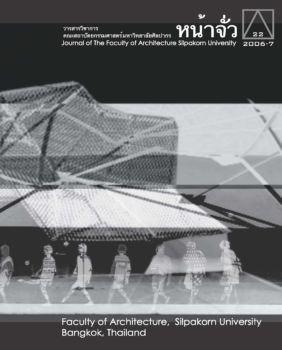Conservation of the Built Vernacular Heritage
คำสำคัญ:
The Buit Vernacular Heritage, Karen village, traditional beliefs, local wisdomบทคัดย่อ
The built vernacular heritage has been accepted as a characteristic and attractive product of society within interdisciplinary contents. Not only vernacular architecture, but including natural environment, overall community image, lives and living, socio-cultural aspects and the Continuity of lives. It appears informal but nevertheless orderly. It is utilitarian and at the same time possesses interest and beauty. This article emphasized the survey study of the Karen village of Ban-Mae-Mee-Nai, Huamuang Subdistrict, Muang Pan District, Lampang Province. And lastly found that the built vernacular heritage of the Karen need the transdisciplinary approach for conservation. The diversity impacts around are, natural environment and ecology, traditional beliefs, local wisdom, lives and living, socio-cultural impacts, local people and lastly vernacular architecture and cultural landscape. The overall impacts are the means of the remaining of Built Vernacular Heritage. If any impact missing, the remaining could not be retained. So on conservation of Built Vernacular Heritage, the over all system should be taken care as the heritage of man.





